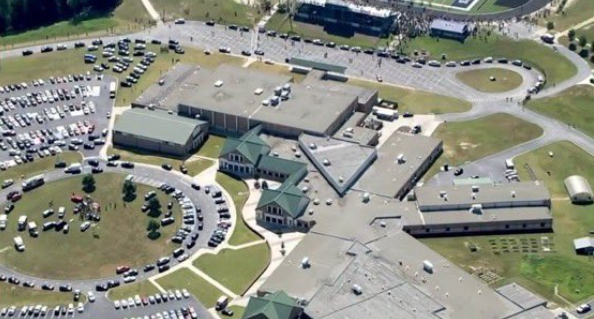Late Wednesday evening, the Federal Bureau of Investigation conceded that they were alerted last year to threats made by the alleged perpetrator of the grisly attack at Apalachee High School in Winder, Georgia. However, they asserted that the evidence gathered at the time didn’t warrant enough legal grounds to apprehend the suspect.
In this horrific incident, four students lost their lives and an additional nine suffered injuries. Following the chaos, a 14-year-old male was taken into custody by local law enforcement, drawing attention to the tragic predicament.
According to a declaration from the FBI’s Atlanta sector, in May 2023, the National Threat Operations Center of the FBI had received a variety of unspecified tips hinting at intentions to carry out an act of violence in a school. Regrettably, the warnings lacked specific details of the location and timing of the plan.
The chilling threats online also included images of firearms, increasing the seriousness of the threats. Within a day, the agency was able to pinpoint the source of the menacing post to the state of Georgia, prompting the Atlanta branch to forward the vital intelligence to their partners in local law enforcement.
The Jackson County Sheriff’s Office made headway, identifying a 13-year-old male as a potential individual of interest. As part of their investigation, they conducted an interview with the teenager and his father, who revealed they had hunting firearms at home.
During the interaction with the Sheriff’s office, the father made it clear that the teenager was not allowed unmonitored access to the weapons. When confronted with the online threats, the youngster refuted any connection to the ominous posts.
In coordination with local authorities, the schools in Jackson County were elevated to a heightened level of vigilance, specifically concerning the activities of this individual. Nonetheless, due to a lack of concrete evidence, no legal action could be undertaken.
In reviewing the circumstances, the FBI stated that the legal precept of ‘probable cause for arrest’ had not been satisfied, meaning that at the time of the incident, no additional procedures could be implemented, irrespective of the jurisdiction of any law enforcement agency.
The FBI clarified in a follow-up statement, the individual previously identified as the 13-year-old of interest was now in the spotlight again, having been arrested in connection with the Apalachee High School tragedy.
Earlier that day, the school had been shaken by a menacing phone call, warning that it was slated as the initial target in a planned spree across five separate academic institutions. This information plunged the local community into an even greater state of fear, raising questions about the reach and extent of these threats.
State police authorities however, quelled fears by confirming that there were no reported incidents at other schools, providing some relief to a deeply anxious public.
One of the key figures in this ongoing investigation, the Georgia Bureau of Investigation Director Chris Hosey, shared that the school resource officers played a pivotal role in de-escalating the crisis. They were responsible for confronting the suspect, leading to his immediate and peaceable surrender.
Hosey noted that their prompt response was integral to getting the young perpetrator into custody without further harm. His remarks underscored the importance of trained security being present on school grounds, a measure that had proved critical in this situation.
At the present time, the investigation is ongoing with local, state, and federal authorities piecing together the tragic events of the day. The community is left grappling with the violent incident, searching for ways to heal and move forward.
Public officials and residents alike have commented on the courage and resilience shown by the local community in the wake of such a travesty. They highlighted the indisputable role strong communities play in supporting each other in times of adversity.
The unfortunate incident at Apalachee High School underlines the need for continued vigilance and effective communication between various levels of law enforcement. It sheds a harsh light on the dangers posed by anonymous online threats and their ability to transform – with deadly consequences – into terrifying reality.


